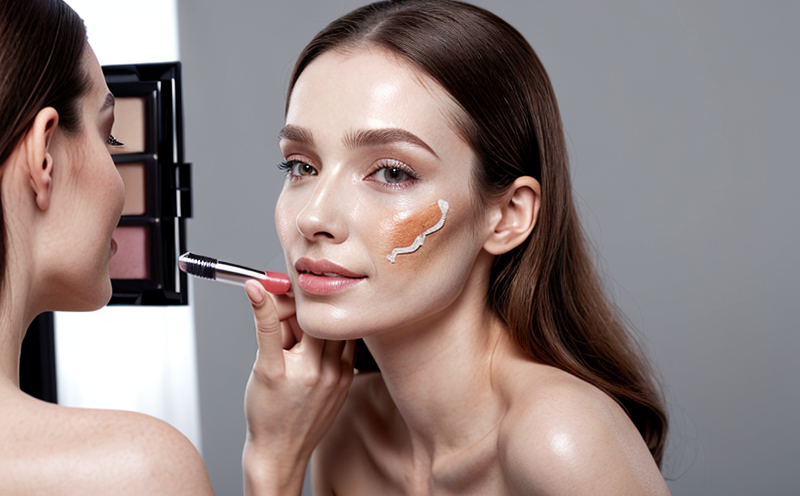Clinical Long-Term Safety Testing of Cosmetic Products
The clinical long-term safety testing of cosmetic products is a critical component in ensuring that personal care items are safe and effective for prolonged use. This type of testing goes beyond the initial short-term assessments to evaluate potential adverse effects over extended periods. It involves monitoring participants who have been using the product regularly under real-world conditions, which can last anywhere from several weeks to months or even years.
The primary purpose is to identify any delayed-onset or cumulative side effects that might not be apparent in shorter-term studies. By observing subjects for an extended duration, researchers gain a more comprehensive understanding of how long-term use affects the skin and body. This data is invaluable for manufacturers seeking to meet stringent regulatory standards and enhance consumer trust.
Regulatory bodies worldwide have established guidelines that mandate thorough safety assessments before any cosmetic product can be marketed. These include the European Union's Cosmetics Regulation (EC No 1223/2009) which stipulates comprehensive safety data, including long-term toxicity studies where necessary. Similarly, the US FDA requires companies to demonstrate safety in clinical trials.
During this testing process, various parameters are continuously monitored such as skin irritation levels, allergic reactions, systemic effects, and changes in physiological indicators like heart rate or blood pressure. Specimen preparation involves collecting samples from participants at regular intervals for analysis using advanced analytical techniques like chromatography or spectroscopy.
The instrumentation used varies depending on the specific aspects being measured but typically includes high-resolution cameras to track any visible signs of adverse reactions, as well as biometric sensors to measure internal bodily responses accurately. Acceptance criteria are stringent and must pass all set benchmarks before a product can proceed further through development stages or gain market approval.
For instance, if there is even the slightest indication of an allergic reaction during testing, it could lead to significant delays in bringing the product to market due to the need for additional safety measures. Therefore, thoroughness and meticulous attention to detail are paramount throughout this phase of cosmetic development.
In summary, clinical long-term safety testing ensures that cosmetics remain safe not just initially but also over extended periods. This approach provides essential information needed by regulatory agencies and helps build consumer confidence in the products they purchase.
Benefits
- Data for Regulatory Compliance: Ensures strict adherence to international standards like ISO, EN, ASTM, and IEC, providing robust evidence required for certification.
- Informed Decision-Making: Provides valuable insights into potential risks which can influence product formulation decisions.
- Better Consumer Trust: Demonstrates a commitment to safety, enhancing brand reputation and customer loyalty.
- Avoids Delays in Market Launch: Identifies issues early on, preventing costly rework or recalls later down the line.
The benefits extend beyond mere compliance; they contribute significantly towards creating safer products while fostering innovation within the industry. By investing time and resources into such rigorous testing protocols upfront, companies can avoid costly mistakes further along in their product lifecycle.
Why Choose This Test
- Rigorous Assessment: Evaluates potential risks associated with long-term use through prolonged observation periods.
- Safety Assurance: Offers peace of mind knowing that the product has been subjected to extensive scrutiny before release.
- Informed Innovation: Insights gained can inform improvements or refinements in future versions of the product.
- Competitive Edge: Demonstrates a strong commitment to quality and safety, positioning your brand favorably against competitors.
Choosing clinical long-term safety testing ensures that you are meeting not only current regulations but also setting a benchmark for excellence. It helps build a foundation of trust with both regulatory authorities and consumers alike.
Competitive Advantage and Market Impact
- Enhanced Reputation: A well-documented history of rigorous safety testing can significantly enhance your brand's reputation among stakeholders.
- Increased Sales: By demonstrating a commitment to product safety, you may see an increase in sales due to higher consumer trust and satisfaction levels.
- Differentiation from Competitors: Offering comprehensive long-term safety testing can differentiate your products from those of competitors who may not adhere as strictly to these practices.
- Potential for Innovation: Insights gained through detailed testing can drive innovation within your product range, leading to new formulations and features that meet evolving consumer needs.
The impact extends beyond individual businesses; it contributes positively to the overall industry by setting high standards for safety and efficacy. As more companies adopt similar practices, public confidence in cosmetics as a whole is likely to grow, benefiting everyone involved.





